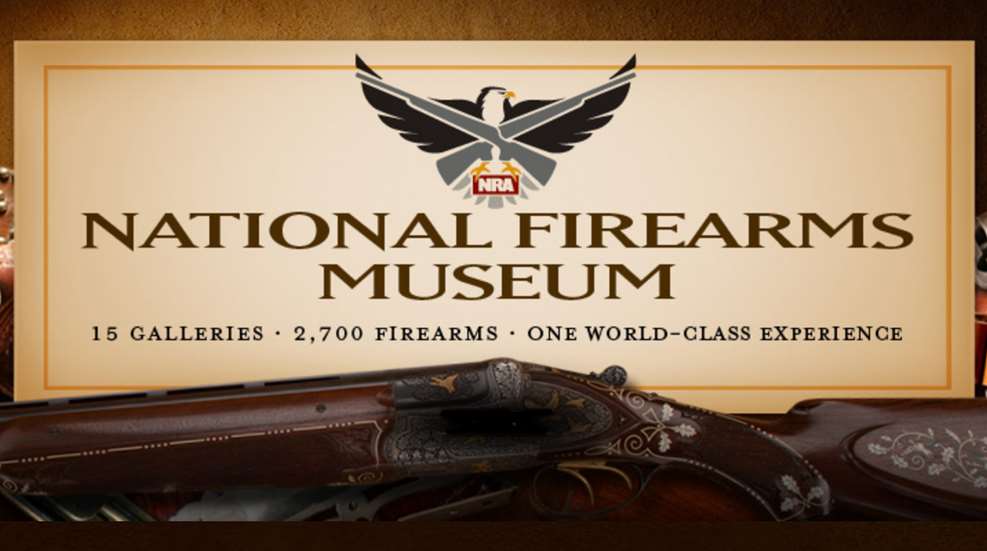
In June 1923, the Official Journal of the National Rifle Association became The American Rifleman, a bi-monthly publication with a staff that included Maj. Julian S. Hatcher, Lt. Col. Townsend Whelen, Capt. Charles Askins, Sr. and a host of others whose names read like a who’s who of legendary gun writers and experts.
As the NRA grew exponentially in the post-World War I era, The American Rifleman became the go-to publication for a burgeoning audience of shooters, hunters and competitors. It wasn’t long before the firearm industry began to send new firearms to the editors for testing and evaluation in the hopes of positive reviews within the magazine’s pages. Most of the guns that were sent in became part of the NRA technical collection, and, by 1935, the collection had become quite sizeable.
NRA Headquarters was, at that time, located in the still-standing Barr Building at Washington, D.C.’s Farragut Square, directly across the street from the venerable Army & Navy Club, a favorite haunt of many NRA staffers. Technical editors at The American Rifleman were able to ship and receive firearms on a regular basis just blocks north of the White House. NRA President Karl Frederick (1934-1936) gifted a number of firearms from his personal collection to the Association, and that gift—coupled with the technical collection at Rifleman—was the foundation of the NRA Gun Collection, which went on public display in 1935.
The NRA Museum was a well-kept secret for much of its existence in downtown Washington, D.C. Formerly, it was comprised of a few exhibit cases in the Barr Building, but, in 1954, the NRA moved into the Schwartz Mansion at Scott Circle a few blocks north of the old location. A few years later, the collection was proudly displayed in 6'x8' cases on the first and second floors of 1600 Rhode Island Ave.
The new display cases, made entirely in-house by the magazine staff, had a display area of 4'x8'—the standard size of a sheet of plywood or pegboard—and were covered in various shades of burlap. Each case contained themed presentations. For instance, one case was dedicated to the presentation of “10 Mauser Rifles,” while another highlighted “10 English Enfields.” Some cases could hold 20 handguns, and text cards were generally 3"x5" index cards with make, model, serial number and chambering listed. Few had much information about the historic background of the items on display.
By the early 1980s, a team of professional museum curators was brought on board so the magazine editors could get on with what they did best, producing a magazine that is still the nation’s oldest and foremost authority on the shooting sports. Soon, the National Firearms Museum Fund became the first 501(c)3 in what is now the NRA Foundation.
The Rhode Island Ave. museum was able to display about 900 firearms, and, in the 1990s, began to experiment with changing up the dated burlap backgrounds and adding accoutrements and ephemera to round out the displays.
NRA HQ made a move to northern Virginia in 1994, and the NRA Museum closed up shop in D.C. and moved its 3,500-gun collection to Fairfax with the rest of the headquarters staff. After a generous gift from William B. Ruger, Sr., the NRA began to design and construct a new museum, which was opened by then-NRA President Marion P. Hammer on May 28, 1998.
Gone were the cookie-cutter 6'x8' cases. The new museum was done in a professional manner with themed exhibits, dioramas and a time line of firearms that began with an ancient hand cannon from 1350 A.D. and spans all the way to the present. Every case was designed to be evocative of the era in which the firearms displayed within were prevalent. When it opened in 1998, it was hailed as the finest museum of its type in the country.
Soon, the collection began to outgrow the exhibit and storage areas, and that embarrassment of riches happily coincided with a generous gift from Frank Brownell, allowing NRA to establish a new firearms museum at the NRA’s Whittington Center in Raton, N.M., in 2008. The NRA’s Frank Brownell Museum of the Southwest already receives nearly 125,000 visitors a year, outpacing the annual visitation of the flagship museum in Fairfax by a margin of three to one.
The 1990s were a decade of tremendous growth for the museum. Staff appearances on cable television and videos that went viral on YouTube combined to increase the public visibility of the NRA Museums and attracted donations and visitors in record numbers. Bass Pro Shops founder and owner Johnny Morris invited NRA Museums to come to his flagship store in Springfield, Mo., in 2013, establishing the NRA’s National Sporting Arms Museum, which now receives nearly 200,000 visitors a year.
Today, the NRA Museums staff is tremendously proud of its three museums, 6,000 firearms on exhibit, numerous books and hundreds of articles that have been published promoting the historic significance of the past in an effort to preserve our rich heritage for the future.
The very best part is that, COVID restrictions permitting, all three museums are free to the public and open seven days a week, except for Christmas and Easter. For more information, go to nramuseum.org.





































